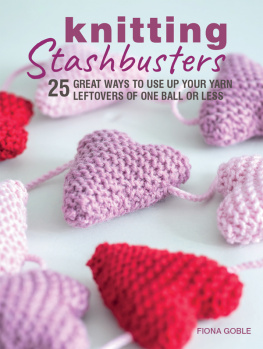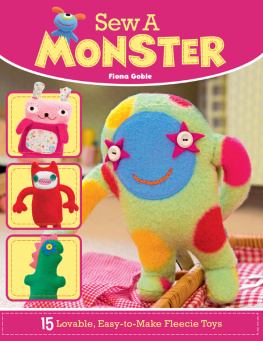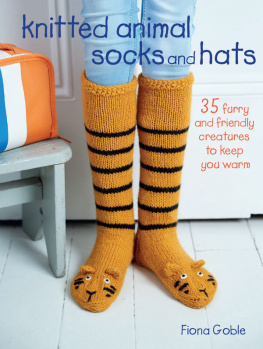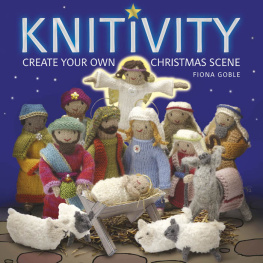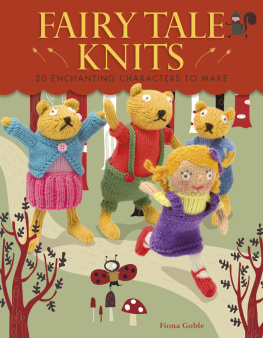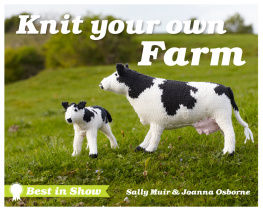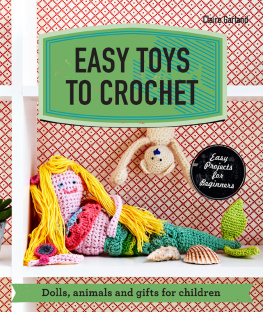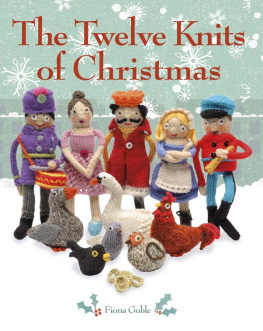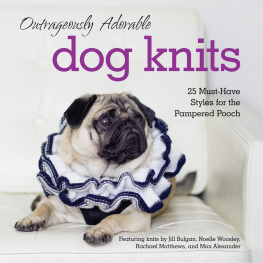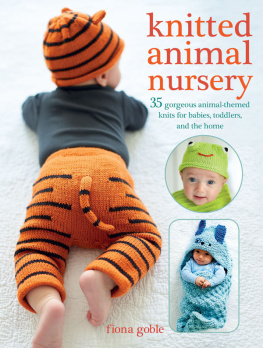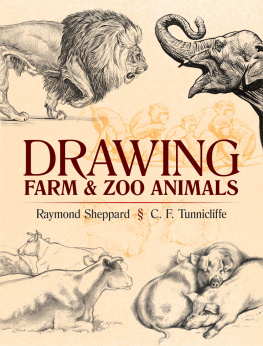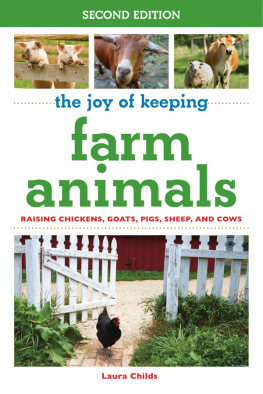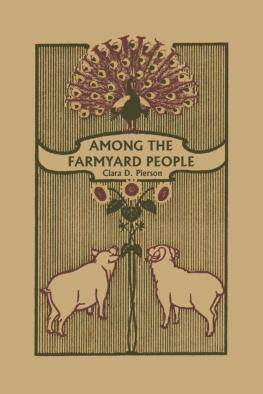

Farmyard Knits
Fiona Goble


Farmyard Knits
Copyright Ivy Press Limited 2013 All rights reserved. No part of this book may be used or reproduced in any manner whatsoever without written permission except in the case of reprints in the context of reviews. Andrews McMeel Publishing, LLC an Andrews McMeel Universal company 1130 Walnut Street, Kansas City, Missouri 64106 www.andrewsmcmeel.com ISBN: 978-1-4494-2930-0 This book was conceived, designed, and produced by
Ivy Press 210 High Street Lewes East Sussex BN7 2NS United Kingdom www.ivypress.co.uk Creative Director
Peter Bridgewater Publisher
Sophie Collins Editorial Director
Tom Kitch Senior Designer
James Lawrence Designer
Kathryn Gammon Photographer
Andrew Perris Illustrator
Sarah Goodreau Color origination by Ivy Press Reprographics
ATTENTION: SCHOOLS AND BUSINESSES Andrews McMeel books are available at quantity discounts with bulk purchase for educational, business, or sales promotional use. For information, please e-mail the Andrews McMeel Publishing Special Sales Department:
IMPORTANT! Safety warning: The knitted figures are not toys. Many have small, removable parts and should be kept out of the reach of small children.

Contents

Introduction
Most small children love to visit a working farm.
This touching and amusing look at a day in the (knitted) farming life comes in woolly form, introducing a full cast of characters, from Anna and Frank, who hold the show together, to Bess the collie, who runs rings around the sheep. Sweet storybook pages pinpointing special moments in the working day are interleaved with simple instructions for knitting the whole farm, from cows and sheep to pigs and hensand not forgetting the farmers horse, a wonderfully squishy woolen tractor, and a play mat that can serve as anything from an action play setting during the day to a comfort blanket at night. All of the characters can be made with basic knitting skills, and youll find that, once youve begun, youll want to complete the whole lineup, creating a set that will provide years of traditional and refreshingly wholesome playwithout a battery in sight. 
Before You Begin
Theres nothing worse than getting the urge to knit, gathering all your yarn together, and then realizing that you dont have something vital. Or worse yet, that yarn you thought was perfect turns out to be not quite right. So to avoid frustration and disappointment, check through your craft box before you begin.
And if you need to, write yourself a knitted farmyard shopping list.
Knitting Needles and Crochet Hooks
Knitting needles These are available in many different materials, including wood, plastic, and various metals. The choice is up to you. Instructions for the projects in this book are given for knitting needles in the following sizes: Size U.S. 1 (2.25 mm) Size U.S. 2/3 (3 mm) Size U.S. 3 (3.25 mm) The main parts of most of the projects are knitted on size U.S. 2/3 (3 mm) needles. 2/3 (3 mm) needles.
Because the projects are small, if you are buying new knitting needles, we recommend that you buy the shortest needles, which are usually 9 inches (23 cm) long. It is also helpful to have needles with sharp, pointed ends, because the project pieces are knitted tightly and sharp, pointed needles make it easier to get into the stitches. Crochet hook While there is hardly any crochet in these projects, for some of the items, you will need to know how to crochet a simple chain and make a simple crochet edge (see ). Choose size U.S. D-3 (3.25 mm) and size U.S. G-6 (4.25 mm) hooks if you are buying them specifically for these projects.
If you already have hooks within a size or two of these, however, they will do the job perfectly well.
Sewing Needles
A needle to sew together your knitted pieces You will need a needle with a fairly blunt end and an eye large enough to thread the yarn through for sewing together your projects. These are sometimes sold as yarn needles, but an ordinary tapestry needle will also work well. An embroidery needle You will need an embroidery needle, which has a sharper end than a yarn needle or tapestry needle, to embroider the finishing touches on your projects. Make sure that the eye of the needle is large enough for you to thread your yarn through it.
Other Tools
A stitch holder, large safety pin, or extra knitting needle In some of the projects, you will need to keep some of your knitting stitches safe while you work on another part of the project.
Other Tools
A stitch holder, large safety pin, or extra knitting needle In some of the projects, you will need to keep some of your knitting stitches safe while you work on another part of the project.
You can use a special stitch holder for this. Alternatively, you can use an extra knitting needle or large safety pin. Some small safety pins You will need these to mark the beginning and end of certain rows in some of the projects. A pair of small, sharp scissors You will need small scissors with sharp blades to cut your yarn and trim all your yarn tails. A tape measure or ruler You will need this to check your gauge and, in some projects, for measuring your knitting. A water-soluble pen This is a special type of felt pen that you can use on fabric or yarn that you can later spray or wipe away with water.
They are useful for marking the position of the features on dolls and animals before you embroider them. They are widely available in craft and sewing stores. A red coloring pencil You will need an ordinary red coloring pencil (not a wax crayon or felt pen) to rub over your finished knitted farmer and his wife to make their cheeks look nice and rosy. A small nylon brush You will need a small nylon brush to fluff up the yarn on some of your finished animals. A nailbrush or toothbrush with nylon bristles should work fine.
Materials
Knitting yarns Almost all the projects are knitted in standard double knitting, or DK, yarn.
It does not matter what brand you choose and you can mix brands within your project. You may also want to choose different colors than the ones we have used. However, it is important to choose yarns that are 100 percent wool or acrylic/wool mixes. Cotton yarns or 100 percent acrylic yarnsparticularly cheaper acrylic yarnswill produce disappointing results. Some of the projects also require small amounts of special yarns, such as mohair. Polyester filling All the projects are stuffed with 100 percent polyester toy filling or stuffing.
This is a light, fluffy white mixture specially manufactured for craft items. It is widely available in craft stores and online. Always check that the filling you are using conforms to safety standards. Foam board You will need some foam board (sometimes called foam core) for the tractor base to keep it rigid. Foam board consists of a layer of Styrofoam coated on both sides with paper. It is lightweight and rigid.
Next page

